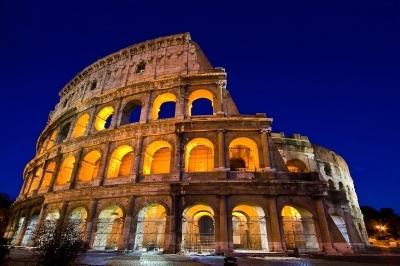Disasters
Design the Skyline
My new favorite band! Yours too?
More info here.
Posted By: Paul - Wed Jan 11, 2012 -
Comments (4)
Category: Annoying Things, Disasters, Ineptness, Crudity, Talentlessness, Kitsch, and Bad Art, Music
Worst. Cocktail. Ever.

Posted By: Paul - Fri Sep 23, 2011 -
Comments (6)
Category: Disasters, 1970s, Alcohol
All Roads Lead From Rome…

Raffaele Bendandi was a self-taught scientist who believed that earthquakes were caused by the gravitational influence of the Sun, Moon and other planets. Though he never attempted to provide proof for his theories, which he believed were intuitively correct, Bendandi scored a number of notable successes in 1910s and 1920s that led to him being feted as “the man who can predict earthquakes” and made a Knight of the Crown of Italy by Mussolini (who also banned him from making public predictions). Because of this ban, Bendandi made no further earthquake predictions until the 1970s, when he successfully forecast the 1976 quake that hit Friuli, Italy.
Bendandi also claimed to have detected another planet, which he named Faenza, orbiting closer to the Sun than Mercury, but, like his science of ‘seismogenics’, his findings are roundly dismissed by modern scientists as imaginative but nothing more.
That he even made today’s prediction is a matter of dispute. Many sources claim that the prediction comes from dates written on notes found after his death and do not give a specific event or location at all, and even among Bendandi’s dedicated following, there is argument as to whether he predicted the Rome quake is due today or in 2511.
Still such is the reputation of Bendandi, who died in 1979, that as much as 18% of city employees are reported to have called in sick today, and many stores are closed and shuttered. (BBC News).
(Image: vichie81 / FreeDigitalPhotos.net)
Posted By: Dumbfounded - Wed May 11, 2011 -
Comments (3)
Category: Authorities and Experts, Disasters, Eccentrics, Science, Weird Theory
Not My Job, Man

You know what? I think I'm gonna sit this one out, and leave it to the experts.
Posted By: Paul - Sat Mar 19, 2011 -
Comments (4)
Category: Disasters, Public Utilities, Power Generation, Technology, Asia
The Draining of Lake Peigneur
Posted By: Paul - Wed Nov 03, 2010 -
Comments (5)
Category: Destruction, Disasters, Stupidity, 1980s
More Dangerous Than Dynamite!
Petroleum and tidiness: a bad combo.
Posted By: Paul - Fri Oct 15, 2010 -
Comments (2)
Category: Death, Destruction, Disasters, Domestic
Ghost Story Comes To Life

Posted By: Nethie - Fri Aug 27, 2010 -
Comments (4)
Category: Accidents, Daredevils, Stuntpeople and Thrillseekers, Death, Disasters, History
I Feel More Secure Already

Posted By: Nethie - Sun Aug 08, 2010 -
Comments (9)
Category: Crime, Destruction, Disasters, Explosives, Flight, Terrorism and Terrorists
Weird Science – From Whales To Sails

Sperm whales are still the largest animal ever to have teeth, but today their diet consists mostly of squid – including the infamous giant squid – and therein lies a problem. Whereas most land dwelling creatures live on plant material, or some juicy meaty derivative thereof, and hence are essentially “carbon-neutral”, marine animals from penguins to whales feast upon carbon that was probably sequestered in the oceans hundreds if not thousands of years ago, or has weathered out of rocks that are millions of years old. One upshot of this is that carbon dating is notoriously inaccurate on marine organisms, what scientists call the “reservoir effect”, another is that unlike water breathers such as fish, who return this carbon to the oceans, air breathing animals like whales will release this carbon to the atmosphere as CO2 and so contribute to global warming. However in new research published by the Royal Society of London, researchers have calculated that whales have actually offset their carbon emissions with emissions of another kind. Whale poop is iron rich and comparatively liquid, hence returns the excess iron in the whale’s diet back to the oceans in a form that is readily usable by phytoplankton. The team, led by Trish Lavery of Flinders University in Australia, estimate that sperm whales are responsible for removing 200,000 more tonnes of carbon from the atmosphere annually than they actually emit (Royal Society).
But it’s not all good news for the tree-huggers for while whales might be a boon in the fight against climate change, their free-range, organic farming practices of preference are almost certainly not. In a paper published by the National Academy of Sciences, Jennifer Burney of Stanford University and her colleagues have found that intensive farming is by far the most land and carbon efficient method of agriculture. Because agricultural land use is a major contributor to global warming, increasing the yields from farmland, and thereby reducing the amount of land farmed, strongly outweighed the extra carbon emissions of the intensive farming needed to achieve this. Doing the sums on farm outputs since 1961, the team found that increased yields have produced the same as cultivating an additional area the size of Russia at 1961 levels, which would have led to the release of 590 billion more tonnes of CO2, equal to about a third of all man-made emissions since the industrial revolution (PNAS).
And modern farming may be coming to our rescue in another way, as a source of cheap batteries. Almost since Ben Franklin gave up kite-flying, kids in schools the world over have been making batteries out of apples or a potatoes. Now a trio of researchers from the Hebrew University of Jerusalem, led by Alex Goldberg, have found a way to turn these vegetable power sources from classroom curiosities into a viable product. What’s more amazing is the method they discovered to generate a tenfold increase the output of their potato power-pack, they boil the potato first. How did no-one think of this before (AIP)?
Another new idea, albeit a less welcome one, is that one should prosecute scientists for not knowing everything. At least that seems to be the approach taken by the public prosecutors of the Italian city of L’Aquilla, which last year was hit unexpectedly by an earthquake that killed over 300 people and injured 1600 more. The defendants include the head of Italy’s National Institute of Geophysics and the director of the National Earthquake Center along with four other equally prominent scientists and Bernardo De Bernardinis then deputy head of the Civil Protection Agency, who together are looking at being tried for manslaughter for not alerting the population to the imminent disaster at a meeting held one week before the quake struck. It was Bernardinis, a government official, who claimed in a press conference held immediately after the meeting that the scientists had said there was “no danger”, despite the minutes of the meeting clearly showing that at no time was the chance of a major shock ever ruled out (Nature).
More in extended >>
Posted By: Dumbfounded - Fri Jul 02, 2010 -
Comments (7)
Category: Agriculture, Animals, Dinosaurs and Other Extinct Creatures, Farming, Disasters, Exercise and Fitness, Food, Government, Health, Nature, Natural Resources, Science, Psychology, Excrement
Can’t Do Anything Right? You Are Not Alone
If you stay up late all the time, like I do, chances are you've seen some of the infomercials that this video is based upon. I'm willing to bet you feel better about yourself after you've watched this.
Posted By: Nethie - Tue Jun 22, 2010 -
Comments (6)
Category: Disasters, Domestic, Entertainment, Humor, Pop Culture, Television, Advertising, Goofs and Screw-ups

| Who We Are |
|---|
| Alex Boese Alex is the creator and curator of the Museum of Hoaxes. He's also the author of various weird, non-fiction, science-themed books such as Elephants on Acid and Psychedelic Apes. Paul Di Filippo Paul has been paid to put weird ideas into fictional form for over thirty years, in his career as a noted science fiction writer. He has recently begun blogging on many curious topics with three fellow writers at The Inferior 4+1. Contact Us |




